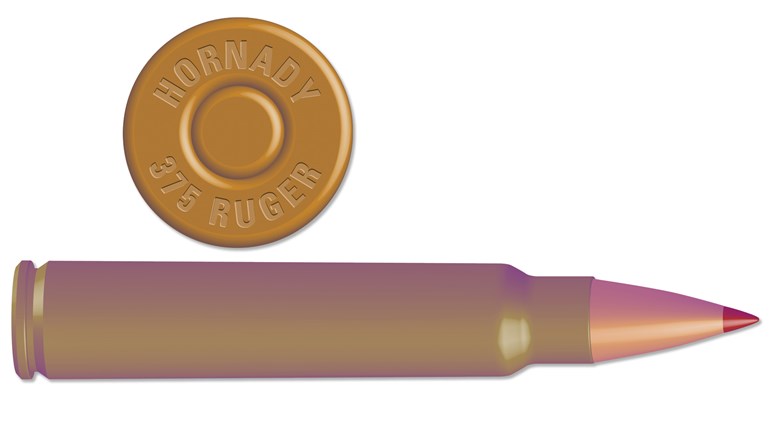
But this isn’t an ideal world, or we wouldn’t be talking about defensive shotguns in the first place.
There have been many loudly voiced and furiously typed opinions regarding the ideal home-defense shotgun, either extolling or calling into question the merits of the pump or semi-auto. Some have appeared on these pages. While both sides of the argument have valid points, each completely ignores another class of shotgun that has served well for centuries. The double-barrel scattergun may evoke images of whirring quail in the broom sedge, but a load of 00 buck is a load of 00 buck, regardless of what type of shotgun delivers the news.
Reliability is most often the crux of the pump vs. semi-auto argument, but whether a malfunction is the fault of the firearm or its operator isn’t going to matter if the gun chokes during a home invasion. Here’s where the double-barrel scattergun shines; it’s hard to screw up a side-by-side or over-under. When that over-under includes a few features that address the complications presented in a home-defense scenario, it makes a pretty good case for embracing the stack-barrel platform, especially with shaking hands that lack fine motor skills or practice with defensive gun-handling techniques.
That’s precisely the argument Mossberg brings to the table with the Maverick HS12, a 12-gauge hunting gun turned home defender. Why would a manufacturer with proven pump-action and semi-auto platforms, specifically tailored to defensive purposes, bring out an over-under for the same application? There are several good answers to that question, but the main reason is simplicity. Not every homeowner has the time—or even the motivation—to become intimately familiar with the shotgun he or she has selected to protect the castle and its contents.
It’s a sad fact, but it’s a fact. I’ll prove it: When is the last time you ran through malfunction drills with your home-defense shotty? Practiced loading it in the dark? Took it to the range? Whatever your answers, add a few months or more, and you’ll have a pretty good idea of how often most defensive shotguns are handled by homeowners who are gun owners but not gun enthusiasts.

There isn’t a repeating shotgun easier to operate than a break-action double barrel. Plunk two shells into the HS12, snap the action shut, push the safety forward, and fire. No need to rely on gas or recoil, or your own strength, to cycle the bolt and load another round. It’s already loaded. Just hit the trigger again if the situation calls for a second shot. Unlike some side-by-sides with a separate trigger for each barrel, the HS12 has only one. Firing and loading it cannot be much simpler.
But the gun only holds two rounds, you gasp. Yep. Make the first one count, and chances are good you won’t need the second. Chances are very good you won’t need a third. If you don’t like those odds, carry extra shells in a sleeve that slips over the buttstock, and spend hours learning how to get them to the chambers quickly. I’ll bet you’ll master it sooner than the comparatively laborious procedure required to stoke an empty pump or semi-auto.
Admittedly, the HS12 does fall short on one feature that would make reloading even easier if the gun were so equipped. It has extractors but not ejectors. You’ll have to pluck empty rounds from the chambers with your fingers. That adds time to the reloading process, but the fired shells aren’t difficult to clear. They are certainly more accessible than a hull stuck in the action of a pump or semi-auto.
But let’s get back to making the first and second rounds count. The HS12 has several features that help in this area. For one, the gun comes equipped with a sighting system that is natural to align and stands out in low light. A steel rib soldered to the top barrel above the receiver provides a base for pinning an aluminum section of rail. If you plan to add an optic, that’s all you need to know. If you like open sights, read on. A channel milled down the center of the rail acts as a rear sight. At the breech end of the channel, a stripe of aluminum is left in the white to reflect ambient light. It acts as a reference point for the front sight, which contains a fiber-optic rod.

The other feature that has obvious self-defense application is the section of rail mounted beneath the barrels in front of the fore-end. Mount a light to it, and you can identify targets in the darkness.
With a short overall length of 36.5 inches and weighing just 6.25 pounds, the HS12 is easy to handle and points quickly. Both are benefits when confronting danger inside the confines of a home.
The HS12 I received for testing had fixed cylinder chokes, but a version with interchangeable choke tubes is available. The cylinder bores did just fine with No. 4 and No. 6 birdshot at 5 yards, which is about as far as I’d have to shoot inside my home. With buckshot, effective range extended to about 15 yards. As expected, there were no failures to fire or function during my range time with the gun. When you consider how simple the Mossberg Maverick HS12 is to operate, and the inherent reliability of its break-open action, limited ammo capacity may be a fair tradeoff.
Specifications
Manufacturer: Khan; Istanbul, Turkey
Importer: O.F. Mossberg & Sons; (203) 230-5300
Action Type: Break-action, over-under shotgun
Gauge: 12; 3-inch chambers
Capacity: 2Barrel Length: 18.5 inches
Sights: Rear groove, fiber-optic front
Stock: Polymer
Length of Pull: 14.25 inches
Overall Length: 36.5 inches
Weight: 6.25 pounds
Accessories: Lock, manual
MSRP: $509




































